by Jon LeSage, editor and publisher, Green Auto Market
Here’s my take on the 10 most significant and interesting occurrences during the past week…….
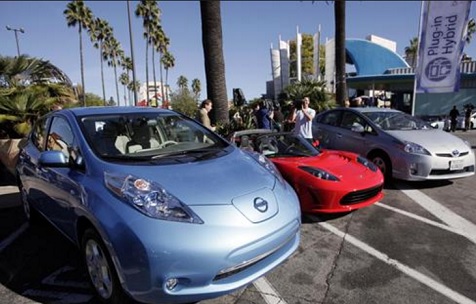 California stays with it: The California Air Resources Board has approved the Advanced Clean Cars (ACC) program, which reaffirms vehicle emissions standards set through 2025 should stay on track. The approved measure also mandates development of stronger requirements for vehicles manufactured in subsequent model years. It was created in 2012 in conjunction with the federal fuel economy and greenhouse gas rules, which may be weakened in Washington by the Trump administration over the next year. It could be the start of a clash between California and the federal government. California’s zero-emission vehicle regulation requires auto manufacturers to produce an increasing number of plug-in hybrid, battery electric, and fuel-cell electric vehicles. CARB also approved the South Coast Air Quality Management District’s comprehensive air quality plan.
California stays with it: The California Air Resources Board has approved the Advanced Clean Cars (ACC) program, which reaffirms vehicle emissions standards set through 2025 should stay on track. The approved measure also mandates development of stronger requirements for vehicles manufactured in subsequent model years. It was created in 2012 in conjunction with the federal fuel economy and greenhouse gas rules, which may be weakened in Washington by the Trump administration over the next year. It could be the start of a clash between California and the federal government. California’s zero-emission vehicle regulation requires auto manufacturers to produce an increasing number of plug-in hybrid, battery electric, and fuel-cell electric vehicles. CARB also approved the South Coast Air Quality Management District’s comprehensive air quality plan.- Keystone pipeline approved: The U.S. State Department’s approval of the Keystone XL pipeline is expected to face a series of hurdles in states directly affected and which have yet to approve. President Donald Trump had committed to Canadian oil company TransCanada to lift the Obama administration’s ban on the pipeline. The 1,200-mile pipeline will transport heavy crude oil from tar sands mines in Canada to a second existing pipeline, which will deliver the crude oil to specialized refineries in Louisiana and other parts of the Gulf Coast. Environmental groups such as the Sierra Club are expected to file legal challenges to final approval and building of the pipeline.
- Tesla gets new investor: Tesla Inc. reported that Chinese tech giant Tencent Holding has taken a 5% stake in the electric automaker for $1.78 billion. Tencent has been playing a role investing in U.S. and Chinese mobility startups in self-driving, electrified vehicles. The company has been best known for its WeChat mobile messaging app. Other EV-maker investments include NextEV, a Shangai-based startup which recently renamed itself Nio. That company has a Silicon Valley office not far from Tesla’s headquarters. Future Mobility is another Chinese startup Tencent has funded.
- Uber crash: Uber is returning part of its autonomous test fleet to San Francisco after experiencing a collision Saturday that ended up grounding the fleet. Uber has been cleared from the accident in Tempe, Ariz., with police saying the crash occurred because a human-driven vehicle failed to yield to the autonomous Uber test vehicle. Uber’s test vehicles are able to travel autonomously, but the company keeps a human driver in the passenger seat ready to take over the car if necessary. Uber, as a company, continues to deal with a wave of bad news.
- Musk backs artificial intelligence venture: Tesla CEO Elon Musk has taken on another passion: Neuralink. Musk is backing the startup venture that, as he says, will merge “biological intelligence and digital intelligence.” The business will be centered on creating devices that can be implanted in the human brain. The end game will be helping human minds partner with software and keep pace with advancement in artificial intelligence. Memory could be improved, and the capacity for human minds to interface with computing devices will be tested. The new system will explore how brain interfaces might alleviate the symptoms of dangerous and chronic medical conditions such as epilepsy and severe depressive disorder. Musk is excited about being part of the “neural lace,” which is a sci-fi term for a brain-computer interface humans could use to improve themselves. He’s been known for debating other entrepreneurs in the artificial intelligence community, which is tied into SpaceX, robotic manufacturing, autonomous vehicles, and other topics.
- New York EV incentives: New York has set up an incentive program for purchasing electric vehicles that supports longer range, affordable cars. Only a few vehicles, like the Tesla Model 3 and the Chevy Bolt EV, will take advantage of the full $2,000 incentive. Requirements for the full incentive are selling electric cars with a range of over 120 miles and a price tag at less than $60,000. Expensive electric cars like the Tesla Model S and Model X, and the BMW i8, can only receive a $500 incentive.
- Aerovironment and eMotorWerks: AeroVironment will be integrating eMotorWerks’ JuiceNet smart-grid electric vehicle charging platform into AeroVironment’s line of charging products. The worked relationship is aimed at helping consumers find increased charging capabilities utilities to assist in managing demand load aggregation. EV drivers will be able to tie in their smartphones, web, and Amazon Alexa voice control over charging. They’ll also be able to tap into other features like looking at real time and historic energy usage for charging and notifications of charging status and other resources for lowering their utility bills.
- ACT Expo keynoters: The speaker lineup has been announced for ACT Expo 2017. Thom Shea, President and CEO of Adamantine Alliance, will share his experience on navigating through challenging times based on his experience as a highly decorated U.S. Navy SEAL, author, and leadership and human performance coach. With a number of policy and budget changes at the federal level, and the always present oil price roller coaster, the advanced technology and alternative fuels sectors face continued uncertainty and possible headwinds. Other speakers announced by ACT Expo include: Pete Melin, Director of Zero Emission Technology, Metro Transit of King County on managing a transit fleet integrating 120 battery electric buses into its operations; Kathryn Garcia, Commissioner, New York City Department of Sanitation on the world’s largest sanitation department testing DME and other efficiency measures; Sandra Berg, Vice Chair, California Air Resources Board on the agency’s role in advanced clean transportation policies; Kary Schaefer, General Manager, Marketing and Strategy, Daimler Trucks North America on leading the way in technology development for advanced clean trucking; Rob Neitzke, President, Cummins Westport on the company’s experience launching the game changing .02g NOx engine. Plus dozens more. See the full agenda and you can get a good look at the display vehicles.
- MUD chargers: A new report by UCLA’s Luskin Center for Innovation identifies multi-unit dwellings (MUDs) that could be targeted for outreach as they exhibit high latent demand for plug-in electrified vehicles (PEVs) and low-cost installation of charging equipment. In order to reach California’s goal of 1.5 million zero emission vehicles by 2025, residents of apartments, condominiums and other MUDs need to be assured that they can charge their PEV at home, writes, Alex Turek, Project Manager, at Luskin Center.
- Cost of fuel economy standards: International Council on Clean Transportation, an independent research group, released a report stating that automakers costs could be reduced by 34 percent to 40 percent per vehicle in the 2022 through 2025 phase of the federal fuel economy standards if enacted from what was approved in January by the Obama administration. Much of that is already happening with automakers utilizing new technologies like turbochargers and advanced transmissions, and lighter weight materials such as aluminum. ICCT has played a role in the Volkswagen diesel emissions scandal investigations, and worked closely with California Air Resources Board and the U.S. Environmental Protection Agency on the findings.

 The Trump administration is keeping the president’s campaign promises supporting fossil fuels and pushing back on clean energy and efficient, clean transport. The State Department’s approval of the Keystone XL pipeline last week raised hackles further for many. Low-to-moderate gasoline and diesel prices aren’t helping make the business case for clean fuel and technologies, either.
The Trump administration is keeping the president’s campaign promises supporting fossil fuels and pushing back on clean energy and efficient, clean transport. The State Department’s approval of the Keystone XL pipeline last week raised hackles further for many. Low-to-moderate gasoline and diesel prices aren’t helping make the business case for clean fuel and technologies, either.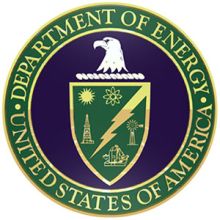 Federal funds cut: If the
Federal funds cut: If the 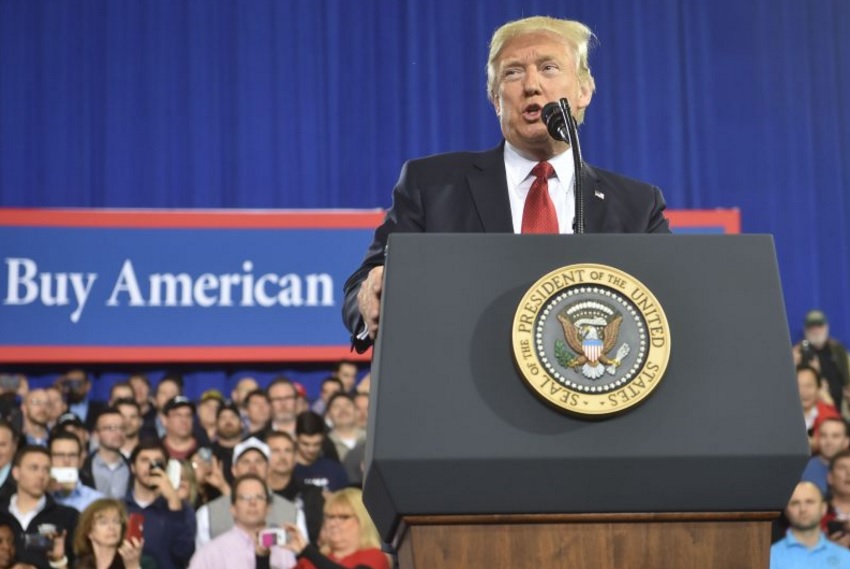 President Donald Trump’s statement on Wednesday reopened the fuel economy and emissions midterm review through the next year, possibly up to the original deadline of April 2018. It’s expected that the Trump administration will weaken the mandate, which when set in 2012, was to double average fleetwide fuel economy to 54.5 mpg by 2025. That mandate was actually based on real-world window sticker average mpg in the high-30s when factoring in automakers’ ability to trade credits and other factors that go into the corporate average fuel economy numbers. The midterm review was included in the 2012 negotiations, with automakers pushing to take a look at how the 2022-25 phase-two period would be going.
President Donald Trump’s statement on Wednesday reopened the fuel economy and emissions midterm review through the next year, possibly up to the original deadline of April 2018. It’s expected that the Trump administration will weaken the mandate, which when set in 2012, was to double average fleetwide fuel economy to 54.5 mpg by 2025. That mandate was actually based on real-world window sticker average mpg in the high-30s when factoring in automakers’ ability to trade credits and other factors that go into the corporate average fuel economy numbers. The midterm review was included in the 2012 negotiations, with automakers pushing to take a look at how the 2022-25 phase-two period would be going. Fuel economy policy: President Donald Trump is expected to announce
Fuel economy policy: President Donald Trump is expected to announce 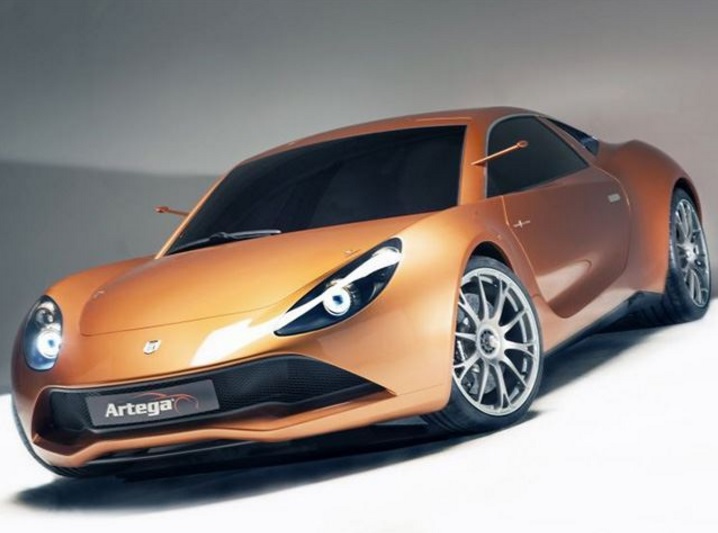 concepts
concepts  months after being started up for development. That prototype test model was powered by two electric motors producing a combined 456 brake horsepower and 679 lb.-ft., with 0 to 62 mph in 3.9 seconds. The new hypercar could be a rival to similar vehicles in the works, such as the Mercedes Project One and Aston Martin Valkyrie. (The featured image is another Audi concept released a few years ago.) The German VW subsidiary has committed to having three electric production cars on sale by the end of the decade. The Audi Q6 e-tron sport utility vehicle should be the first to come out, and ready for launch later this year. Stadler also expressed interest in the company’s role in the Formula E series and the idea of electromobility.
months after being started up for development. That prototype test model was powered by two electric motors producing a combined 456 brake horsepower and 679 lb.-ft., with 0 to 62 mph in 3.9 seconds. The new hypercar could be a rival to similar vehicles in the works, such as the Mercedes Project One and Aston Martin Valkyrie. (The featured image is another Audi concept released a few years ago.) The German VW subsidiary has committed to having three electric production cars on sale by the end of the decade. The Audi Q6 e-tron sport utility vehicle should be the first to come out, and ready for launch later this year. Stadler also expressed interest in the company’s role in the Formula E series and the idea of electromobility.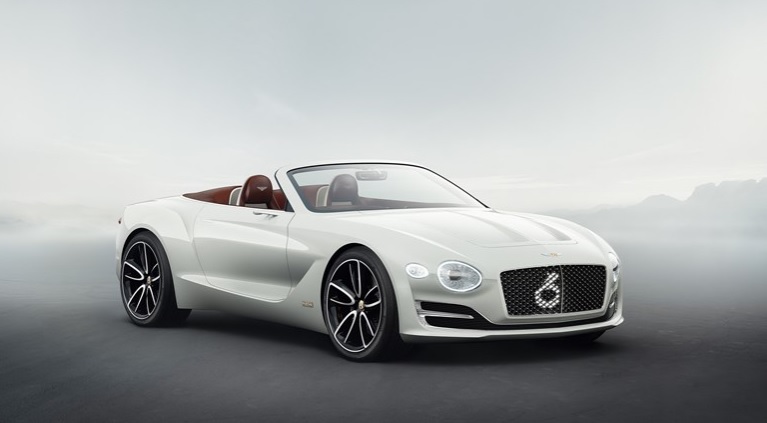 access to wireless charging as one of its offerings. If rapid wireless charging isn’t available for a few years, the electric car can be charged through an auxiliary charging point that will be out sight behind the rear license plate. The compmany reiterated its plan to introduce plug-in hybrid electric vehicle models across the Bentley model range, which will start with the Bentayga in 2018. As for the EXP 12 Speed 6e, “Bentley is committed to offering an electric model in its future portfolio and we are interested to receive feedback on this concept,” said Wolfgang Dürheimer, chairman and chief executive.
access to wireless charging as one of its offerings. If rapid wireless charging isn’t available for a few years, the electric car can be charged through an auxiliary charging point that will be out sight behind the rear license plate. The compmany reiterated its plan to introduce plug-in hybrid electric vehicle models across the Bentley model range, which will start with the Bentayga in 2018. As for the EXP 12 Speed 6e, “Bentley is committed to offering an electric model in its future portfolio and we are interested to receive feedback on this concept,” said Wolfgang Dürheimer, chairman and chief executive. (New Electric Urban Vehicle) will be part of it and was announced in Geneva. The all-electric concept vehicle will offer owners both personal trips and a revenue model for automated ridesharing when the owner doesn’t need to use the vehicle. Rolling out hybrid technology across of its vehicle line will be the first part of the Electric Vision; and the automaker said it will also make available a line of plug-in hybrid, battery electric, and hydrogen fuel cell vehicles in the European market. “We will leverage Honda’s global R&D resources to accelerate the introduction of a full portfolio of advanced, electrified powertrains for the European customer,” Inoue said.
(New Electric Urban Vehicle) will be part of it and was announced in Geneva. The all-electric concept vehicle will offer owners both personal trips and a revenue model for automated ridesharing when the owner doesn’t need to use the vehicle. Rolling out hybrid technology across of its vehicle line will be the first part of the Electric Vision; and the automaker said it will also make available a line of plug-in hybrid, battery electric, and hydrogen fuel cell vehicles in the European market. “We will leverage Honda’s global R&D resources to accelerate the introduction of a full portfolio of advanced, electrified powertrains for the European customer,” Inoue said. 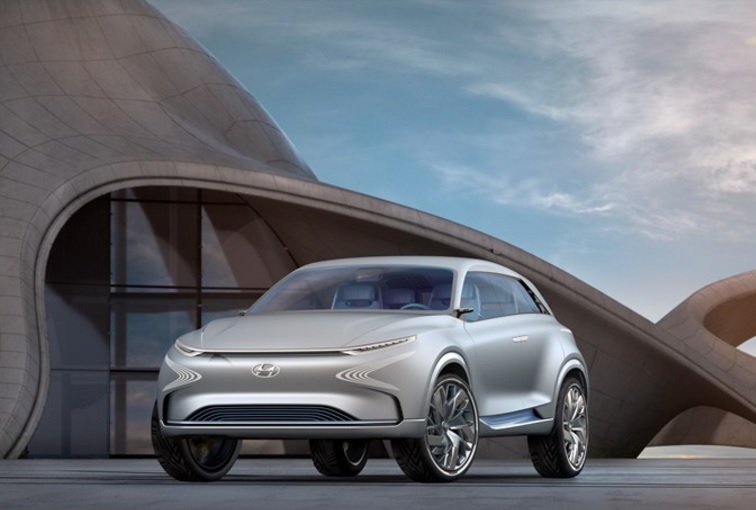 The company says it will go 800 kilometers (497 miles) on a tank of hydrogen. Hyundai said it will be 20% lighter and have 10% greater efficiency than the Tucson Fuel Cell (called the ix35 in Europe). Energy density will be improving quite a bit, by 30%, which the company said will be integral in boosting the range from 265 miles in the Tucson Fuel Cell to 497 miles in the FE Fuel Cell Concept (at least for now; EPA fuel economy ratings will probably bring down that total for the concept fuel cell vehicle).
The company says it will go 800 kilometers (497 miles) on a tank of hydrogen. Hyundai said it will be 20% lighter and have 10% greater efficiency than the Tucson Fuel Cell (called the ix35 in Europe). Energy density will be improving quite a bit, by 30%, which the company said will be integral in boosting the range from 265 miles in the Tucson Fuel Cell to 497 miles in the FE Fuel Cell Concept (at least for now; EPA fuel economy ratings will probably bring down that total for the concept fuel cell vehicle).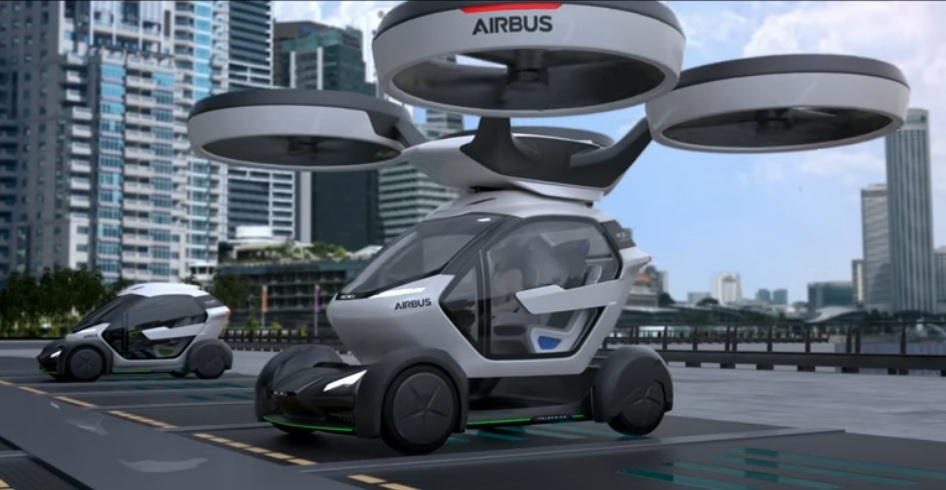 driving and able to release its passenger to a flying drone. A drone will hover over the car, attach itself, and then carry the passenger pod to its destination. Italdesign’s Capsula concept goes back all the way to the 1982 Turn auto show. The new concept vehicle from Italdesign and Airbus would offer the latest in ground mobility tapped into flying vehicle technology being tested – ideal for crowded city streets.
driving and able to release its passenger to a flying drone. A drone will hover over the car, attach itself, and then carry the passenger pod to its destination. Italdesign’s Capsula concept goes back all the way to the 1982 Turn auto show. The new concept vehicle from Italdesign and Airbus would offer the latest in ground mobility tapped into flying vehicle technology being tested – ideal for crowded city streets.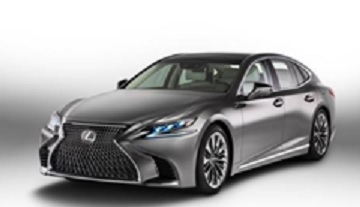 version of Lexus’s flagship sedan. The Toyota division hasn’t released the price, but it could compete directly with the Tesla Model S at a base level and go near $90,000 at the high end. It has a V6 gasoline engine paired with two electric motors, a lithium-ion battery, and 354 horsepower on a multi-stage hybrid transmission. It will come out as a 2018 model year vehicle.
version of Lexus’s flagship sedan. The Toyota division hasn’t released the price, but it could compete directly with the Tesla Model S at a base level and go near $90,000 at the high end. It has a V6 gasoline engine paired with two electric motors, a lithium-ion battery, and 354 horsepower on a multi-stage hybrid transmission. It will come out as a 2018 model year vehicle.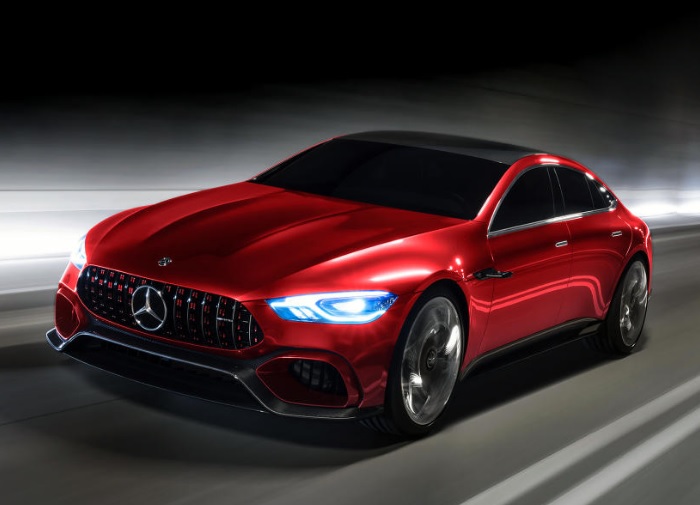 indicates that the German sports car brand is looking at adding the new model to electrification of its future models under the new electric brand. All performance hybrids from AMG will carry this EQ Power+ designation. This concept taps into a combination of a gas-powered 4.0-liter twin-turbo V8, a high-performance electric motor, and a powerful yet lightweight battery to get a total system output of 805 horsepower. The concept vehicle is being tied into Mercedes-AMG’s 50th anniversary.
indicates that the German sports car brand is looking at adding the new model to electrification of its future models under the new electric brand. All performance hybrids from AMG will carry this EQ Power+ designation. This concept taps into a combination of a gas-powered 4.0-liter twin-turbo V8, a high-performance electric motor, and a powerful yet lightweight battery to get a total system output of 805 horsepower. The concept vehicle is being tied into Mercedes-AMG’s 50th anniversary. promoting it as the flagship in the Panamera brand for its impressive power delivery. It can deliver 500 kW/680 horsepower of system power and 850 Nm of torque. It goes from zero to 100 km/m (62.13 mph) in 3.4 seconds, and can hit a top speed of 310 km/h (192.62 mph). The power comes from a 100 kW electric motor combined with a four-liter V8 engine that can bring the hybrid system 550 in horsepower.
promoting it as the flagship in the Panamera brand for its impressive power delivery. It can deliver 500 kW/680 horsepower of system power and 850 Nm of torque. It goes from zero to 100 km/m (62.13 mph) in 3.4 seconds, and can hit a top speed of 310 km/h (192.62 mph). The power comes from a 100 kW electric motor combined with a four-liter V8 engine that can bring the hybrid system 550 in horsepower.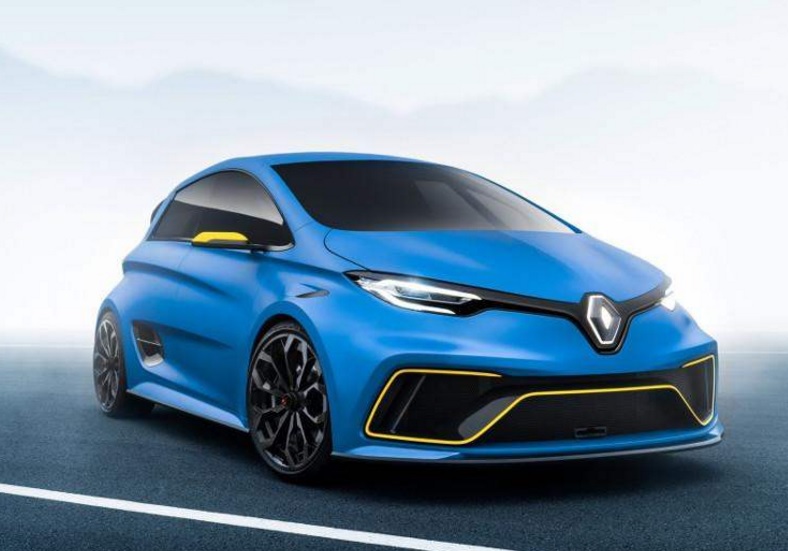 automaker’s commitment to electric vehicles with winning two titles in FIA Formula E races. The e-Sport Concept will be built on the Zoe all-electric car’s platform and will have some of the same aerodynamic design and styling of the Renault e.dams team’s Formula E single-seaters. It will also utilize lightweight carbon fiber, as does Renault e.dams’ racer. The Renault e-Sport is powered by two motors that deliver a total of 340 kW of power. It will come with two batteries for energy storage with a total capacity of 40 kWh.
automaker’s commitment to electric vehicles with winning two titles in FIA Formula E races. The e-Sport Concept will be built on the Zoe all-electric car’s platform and will have some of the same aerodynamic design and styling of the Renault e.dams team’s Formula E single-seaters. It will also utilize lightweight carbon fiber, as does Renault e.dams’ racer. The Renault e-Sport is powered by two motors that deliver a total of 340 kW of power. It will come with two batteries for energy storage with a total capacity of 40 kWh.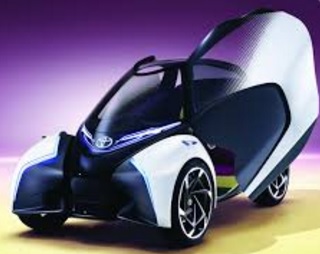 globally at the Geneva Motor Show
globally at the Geneva Motor Show Battle over biofuels: Conflict and confusion
Battle over biofuels: Conflict and confusion  Last week’s announcement of the $155 million that oil giant BP will be placing in Clean Energy Fuel Corp.’s Redeem renewable natural gas (RNG) shows a microcosm of much larger trends:
Last week’s announcement of the $155 million that oil giant BP will be placing in Clean Energy Fuel Corp.’s Redeem renewable natural gas (RNG) shows a microcosm of much larger trends: